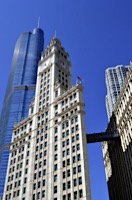
As Groupon would say, the deal is on.
The social buying site on Thursday filed to go public, a hotly anticipated debut that could raise $3 billion, according to two people close to the company who were not authorized to speak publicly. At that level, the company would be worth roughly $30 billion, surpassing the value of Google at its initial public offering.
Groupon is part of an elite club of social Internet companies that is fanning investor ardor for the next generation of technology giants. The gaming company Zynga is preparing to file for an offering that could value it at more than $10 billion, according to two people with knowledge of the matter who were not authorized to speak publicly.










 Everyday we face various Stop signs. Not only in a car, but in our professional and personal lives as well. When someone gives us unfavorable feedback, or we lose support, or we lose funding, or something does not work out, we face a Stop sign. But many people take these encounters far too literally and see “stop-trying signs.”
Everyday we face various Stop signs. Not only in a car, but in our professional and personal lives as well. When someone gives us unfavorable feedback, or we lose support, or we lose funding, or something does not work out, we face a Stop sign. But many people take these encounters far too literally and see “stop-trying signs.” How long does it take the plastic jug in your fridge to break down? Green Bottle has produced an alternative option which can be recycled or added to a compost. Best of all, it only takes approximately 5 weeks to decompose, reports The Random Forest.
How long does it take the plastic jug in your fridge to break down? Green Bottle has produced an alternative option which can be recycled or added to a compost. Best of all, it only takes approximately 5 weeks to decompose, reports The Random Forest.







